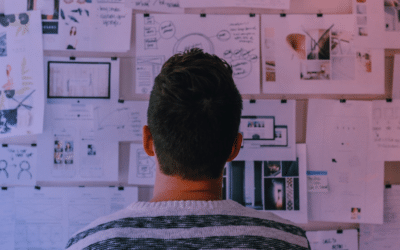Is there a way to put a dollar amount on pristine forests or marshlands? The United Nations believes so—and that the ability to do it might be a valuable step toward combating the slew of environmental challenges the world faces. In mid-March, the UN adopted the System of Environmental-Economic Accounting—Ecosystem Accounting (SEEA EA) framework, a “landmark” way for countries to report on their own natural capital.
“Our dependence [on nature] must be acknowledged, must be recognized. It must be captured and accounted,” said Pushpam Kumar, chief environmental economist of the United Nations Environment Programme.
The framework’s focus is on natural capital, a monetary representation of the value of nature—and its ability to provide food, air, water, and income for humans. Proponents of natural capital say that it can help countries, businesses, and other organizations make more informed decisions about how they use natural resources. However, some criticize the idea that nature should be measured this way.
Putting a price on it
SEEA EA is designed to be used by countries to evaluate their ecosystems, the benefits they bring, and their impacts on natural spaces as a whole. Basically, a country gathers environmental data about their ecosystems, applies the framework established in SEEA EA, and receives a monetary representation of their natural capital. According to Kumar, the framework can also be applied to smaller parcels of land or water within a country, and there are other qualitative descriptions of the economic boons of nature that come from it as well.
The data gathered takes into account various factors, like the size and condition of countries’ ecosystems, which would include soil depth in a forest, for example. It also takes into account the services the ecosystem provides, like a forest filtering water before it reaches streams and rivers; the benefits it provides, like cleaner water and reduced water treatment costs; and the beneficiaries, such as the humans within an economy whose lives are improved by nature.
The sum yielded by a SEEA EA analysis is similar to the concept of gross domestic product (GDP), but it measures the value of nature. It can be used as a comparison against GDP to note the cost of economic growth on a country’s ecosystems, Kumar said. It also highlights that some countries with low GDP can have a wealth of natural value in the form of healthy ecosystems and biodiversity.
Natural capital reporting has been implemented in the past. For example, in 2014, Sweden turned to the concept to help inform its carbon tax policy. The SEEA EA has also been partly rolled out in various other countries such as the Netherlands and South Africa, back when it was still in its experimental stages.
But according to Martin Lok, executive director of the Capitals Coalition—an organization that brings together businesses, governments, and academics to embed the value of nature into decision-making—the UN framework can standardize the methods and metrics behind natural capital reporting. This could also ensure that a country using SEEA EA is able to adequately compare itself to its peers, as they would be using the same framework.
Implementation challenges
Natural capital could encourage countries and companies to restore nature, or protect other pieces of it, to maintain the environmental-economic strength of an area. It could impart the idea that in order to take something from nature, there’s a need to give something back, Lok said.
Some challenges may likely exist in actually using the framework, however. Environmental data may not be as readily available in some countries as others. For example, the Netherlands has advanced environmental reporting within its borders—not every country has the capacity to do that. Further, Lok said, just because the UN adopted the framework, that does not necessarily mean that every country will use it.
According to Robert Fletcher, environmental anthropologist at Wageningen University in the Netherlands, the UN adopting this framework will likely increase interest in natural capital as a concept. “I think it will confer even more legitimacy on this perspective,” he said.
The concept is not without its flaws, Fletcher said. While the researcher has no issues with natural capital in concept, he doubts that it will be effective in changing the course of economic development. Companies and countries already know that their profit often comes from extracting natural resources and that this process often harms the environment. But it has not slowed how much they extract from the ground. If the world were to fully integrate natural capital reporting into its decision-making, it would also seriously diminish profits.
“There’s this idea being perpetuated that you can have social support, environmental support, and a significant rate of profit. I just don’t see how those things can be reconciled,” he said.
Better options?
It’s possible that focusing on natural capital could “crowd out” or draw attention away from other conservation efforts that might provide stricter protections. In other words, government regulation and international agreements might be more effective than accounting at compelling companies and countries to start reining in their natural resource exploitation.
“The more people focus on a natural capital valuation, the less space there is to consider these other options,” Fletcher said.
Also, using natural capital as a decision-making metric might encourage a country to protect or regenerate some of its natural spaces to offset extraction in others. But it might not be enough for them to simply keep the resources in the ground, Fletcher said.
“There needs to be some sort of framework that holds accountable, and in a way forces them … to limit resource extraction,” Fletcher said.
But according to Lok, there’s still room for other environmental protections with natural capital around. The reporting system can help decision-makers understand the role of nature in the economy. This doesn’t prevent countries from enacting other environmental protections. Further, nature is currently not taken into account much when it comes to making economic decisions.
“In many cases, [nature] is getting, if I may put it bluntly, a financial value of nothing,” Lok said.



